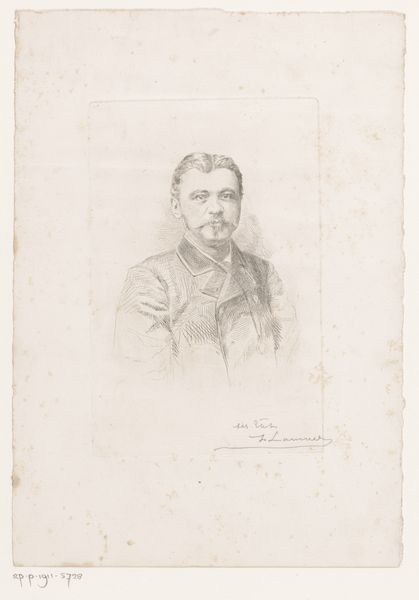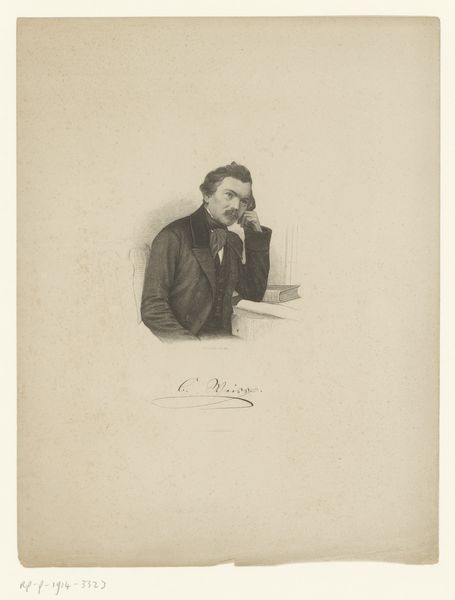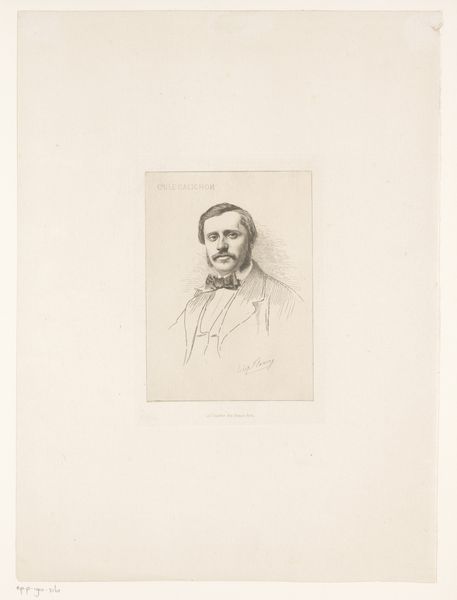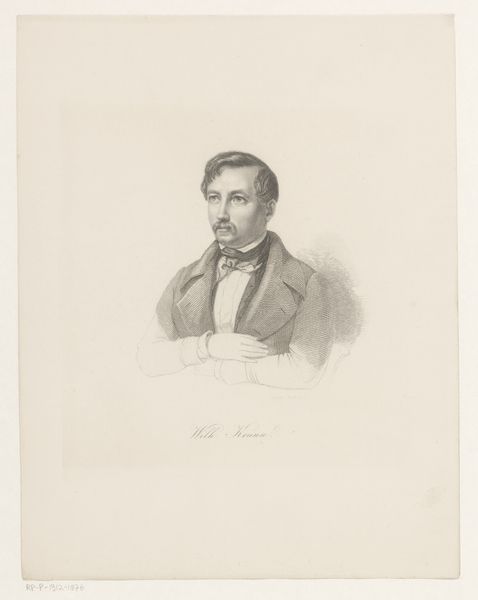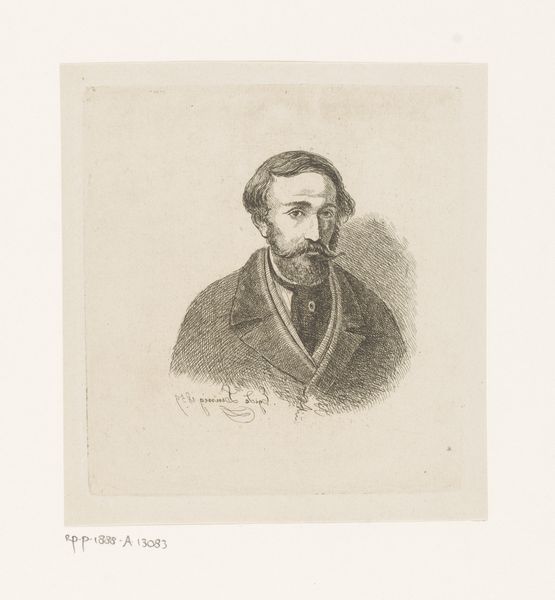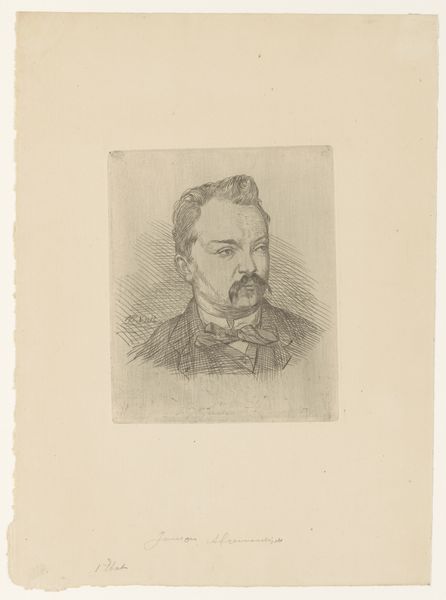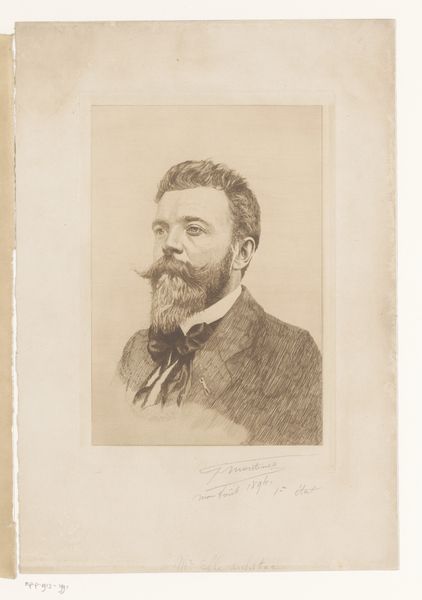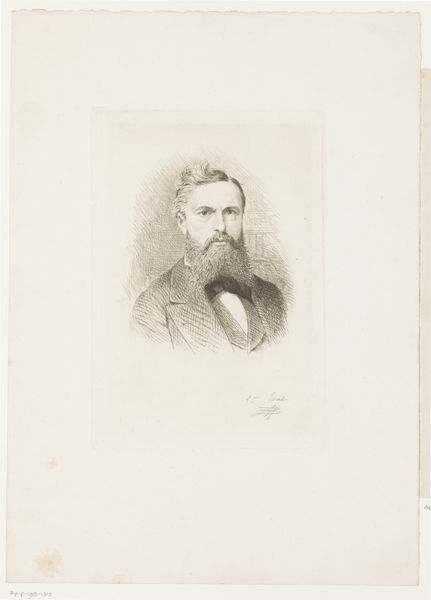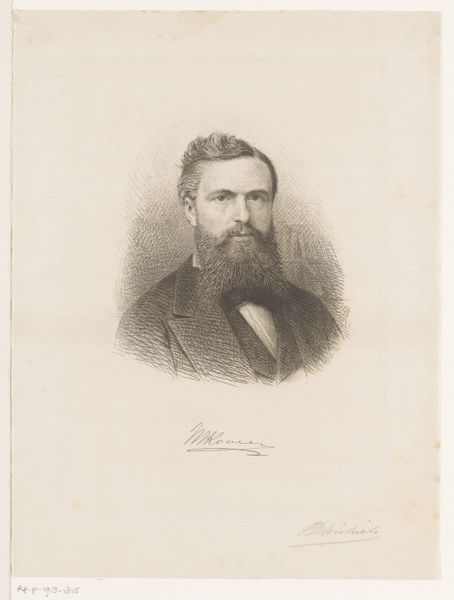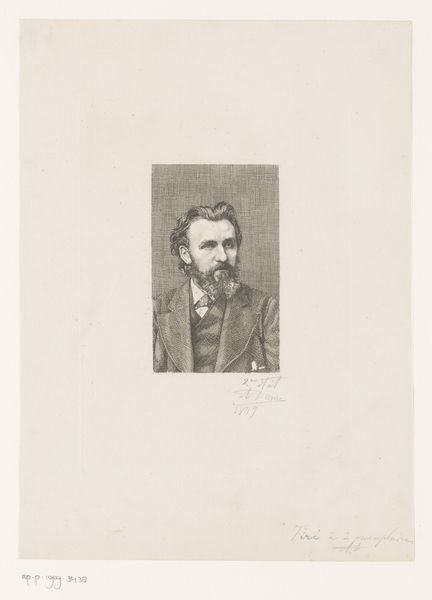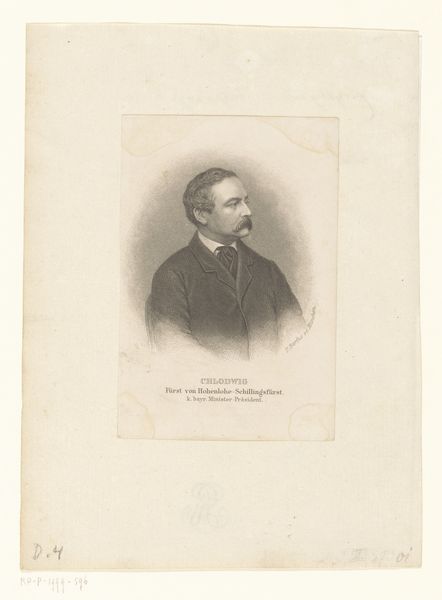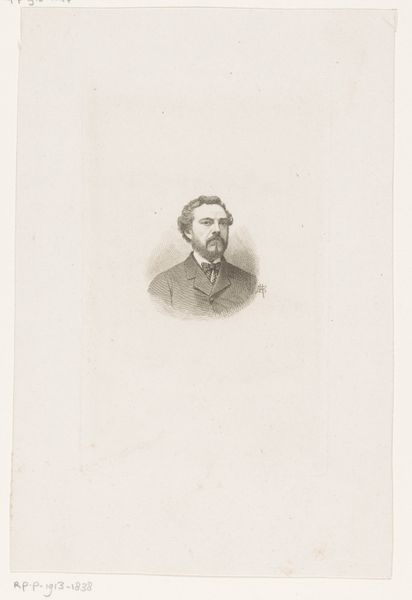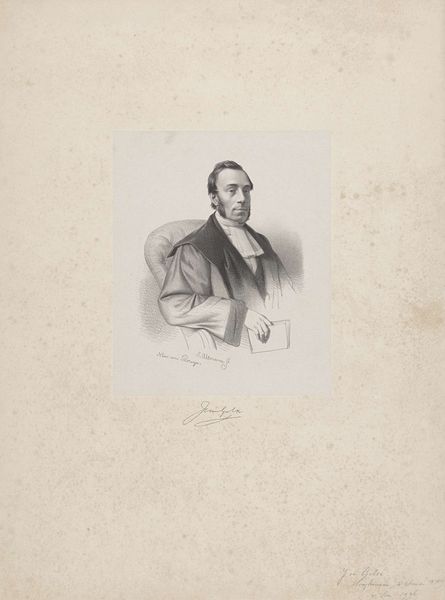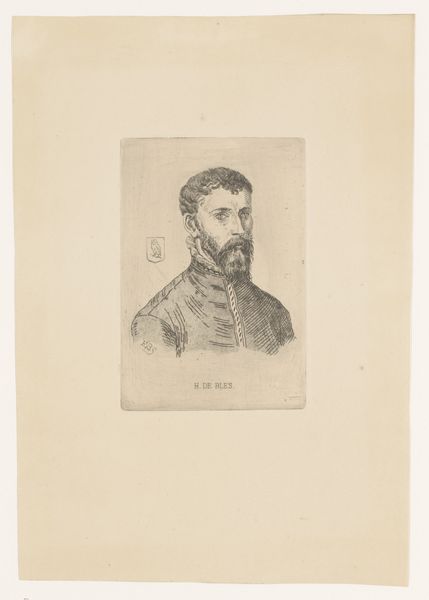
Portrait of the Critic Gustave Geffroy Possibly 1890
0:00
0:00
drawing, print, etching, paper, ink
#
portrait
#
drawing
# print
#
impressionism
#
etching
#
paper
#
ink
#
france
#
men
#
portrait drawing
Dimensions: 217 × 170 mm (image); 258 × 198 mm (plate); 296 × 243 mm (primary support); 452 × 316 mm (secondary support)
Copyright: Public Domain
Marie Bracquemond etched this portrait of the critic Gustave Geffroy using a metal plate, likely copper, and strong acids to create the lines that hold the ink. Look closely, and you’ll see the amazing control Bracquemond had over the etching process, rendering a wide range of tones and textures. The etching technique involves covering a metal plate with a waxy, acid-resistant ground, then drawing through the ground with a sharp needle to expose the metal. The plate is then immersed in acid, which bites into the exposed lines. The longer the plate stays in the acid, the deeper and darker the lines will be. This is a labor-intensive process, requiring not only artistic skill but also a deep understanding of chemistry and materials. The medium of printmaking allowed for wider distribution, and in this case, an act of cultural exchange, as Bracquemond immortalized the visage of a prominent art critic, offering a glimpse into the intellectual circles of her time. The very act of etching, with its reliance on craft and industrial processes, sits at the intersection of art, labor, and social commentary. It blurs the boundaries between fine art and craft.
Comments
No comments
Be the first to comment and join the conversation on the ultimate creative platform.
